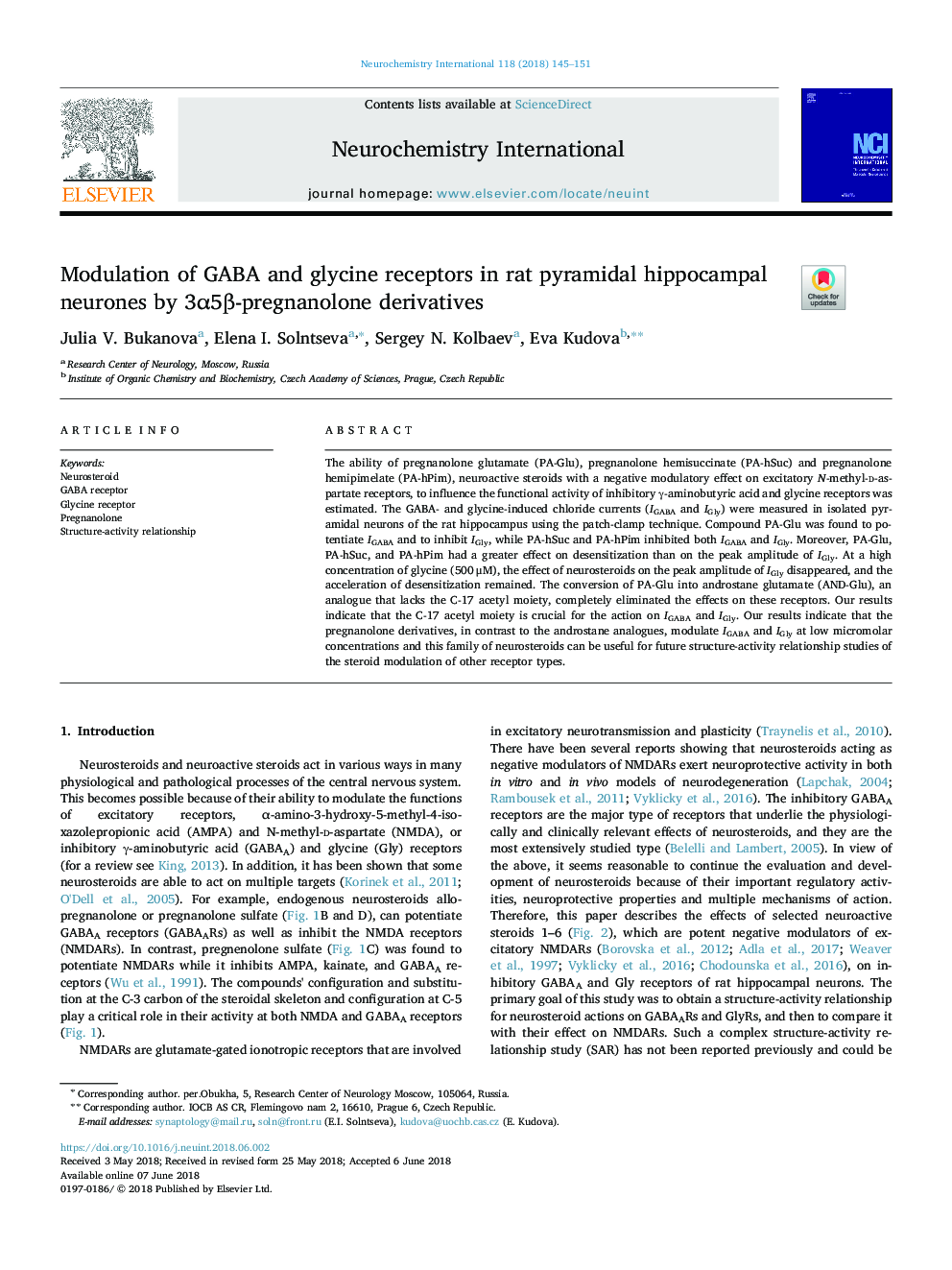| Article ID | Journal | Published Year | Pages | File Type |
|---|---|---|---|---|
| 8478877 | Neurochemistry International | 2018 | 7 Pages |
Abstract
The ability of pregnanolone glutamate (PA-Glu), pregnanolone hemisuccinate (PA-hSuc) and pregnanolone hemipimelate (PA-hPim), neuroactive steroids with a negative modulatory effect on excitatory N-methyl-d-aspartate receptors, to influence the functional activity of inhibitory γ-aminobutyric acid and glycine receptors was estimated. The GABA- and glycine-induced chloride currents (IGABA and IGly) were measured in isolated pyramidal neurons of the rat hippocampus using the patch-clamp technique. Compound PA-Glu was found to potentiate IGABA and to inhibit IGly, while PA-hSuc and PA-hPim inhibited both IGABA and IGly. Moreover, PA-Glu, PA-hSuc, and PA-hPim had a greater effect on desensitization than on the peak amplitude of IGly. At a high concentration of glycine (500â¯Î¼M), the effect of neurosteroids on the peak amplitude of IGly disappeared, and the acceleration of desensitization remained. The conversion of PA-Glu into androstane glutamate (AND-Glu), an analogue that lacks the C-17 acetyl moiety, completely eliminated the effects on these receptors. Our results indicate that the C-17 acetyl moiety is crucial for the action on IGABA and IGly. Our results indicate that the pregnanolone derivatives, in contrast to the androstane analogues, modulate IGABA and IGly at low micromolar concentrations and this family of neurosteroids can be useful for future structure-activity relationship studies of the steroid modulation of other receptor types.
Related Topics
Life Sciences
Biochemistry, Genetics and Molecular Biology
Cell Biology
Authors
Julia V. Bukanova, Elena I. Solntseva, Sergey N. Kolbaev, Eva Kudova,
